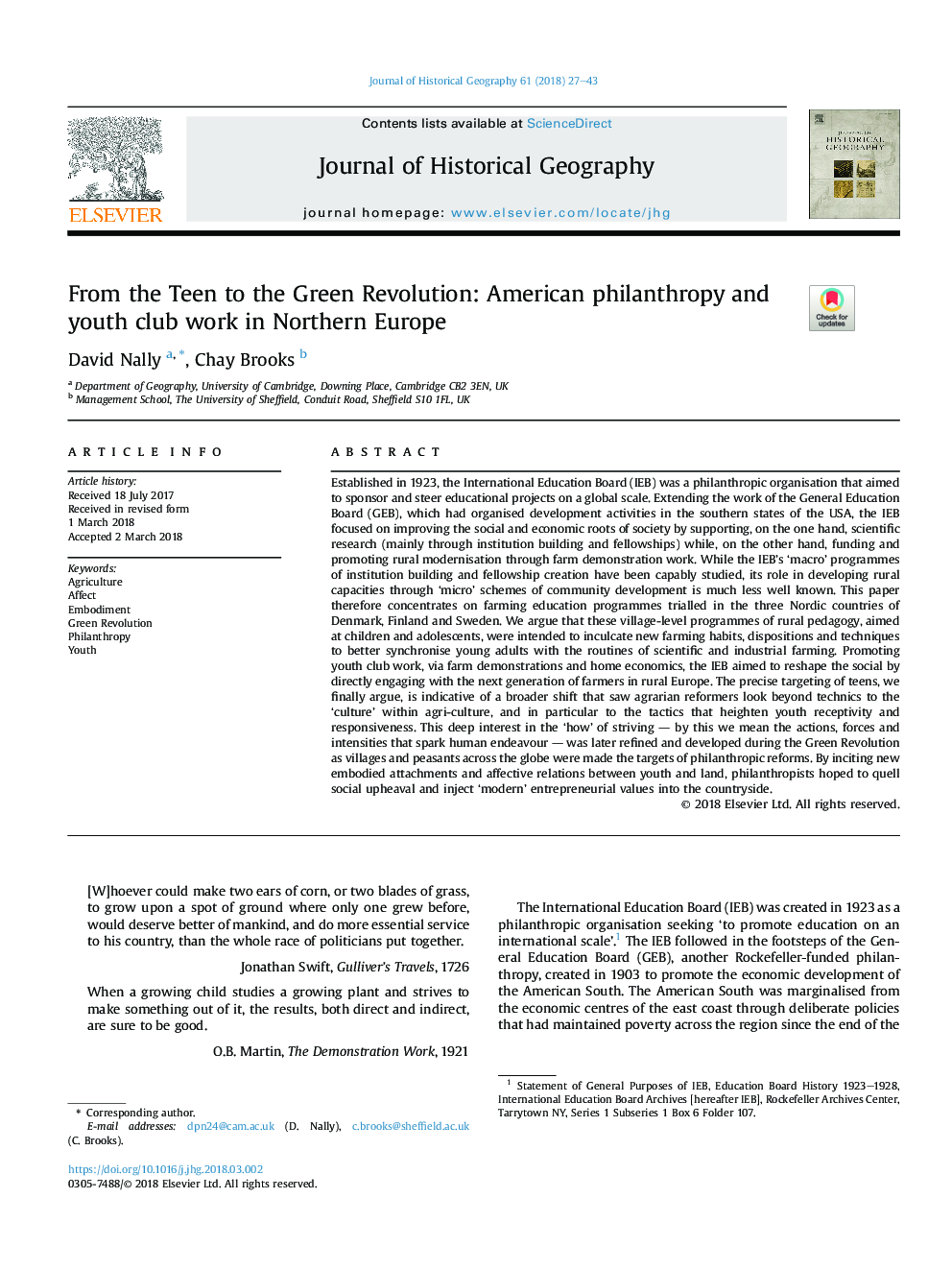| کد مقاله | کد نشریه | سال انتشار | مقاله انگلیسی | نسخه تمام متن |
|---|---|---|---|---|
| 7446686 | 1483964 | 2018 | 17 صفحه PDF | دانلود رایگان |
عنوان انگلیسی مقاله ISI
From the Teen to the Green Revolution: American philanthropy and youth club work in Northern Europe
ترجمه فارسی عنوان
از نوجوان تا انقلاب سبز: کارآفرینی و کارآفرینی جوانان آمریکایی در شمال اروپا
دانلود مقاله + سفارش ترجمه
دانلود مقاله ISI انگلیسی
رایگان برای ایرانیان
کلمات کلیدی
کشاورزی، تاثیر می گذارد، تجسم، انقلاب سبز، خیرخواهی جوانان،
موضوعات مرتبط
علوم انسانی و اجتماعی
علوم انسانی و هنر
تاریخ
چکیده انگلیسی
Established in 1923, the International Education Board (IEB) was a philanthropic organisation that aimed to sponsor and steer educational projects on a global scale. Extending the work of the General Education Board (GEB), which had organised development activities in the southern states of the USA, the IEB focused on improving the social and economic roots of society by supporting, on the one hand, scientific research (mainly through institution building and fellowships) while, on the other hand, funding and promoting rural modernisation through farm demonstration work. While the IEB's 'macro' programmes of institution building and fellowship creation have been capably studied, its role in developing rural capacities through 'micro' schemes of community development is much less well known. This paper therefore concentrates on farming education programmes trialled in the three Nordic countries of Denmark, Finland and Sweden. We argue that these village-level programmes of rural pedagogy, aimed at children and adolescents, were intended to inculcate new farming habits, dispositions and techniques to better synchronise young adults with the routines of scientific and industrial farming. Promoting youth club work, via farm demonstrations and home economics, the IEB aimed to reshape the social by directly engaging with the next generation of farmers in rural Europe. The precise targeting of teens, we finally argue, is indicative of a broader shift that saw agrarian reformers look beyond technics to the 'culture' within agri-culture, and in particular to the tactics that heighten youth receptivity and responsiveness. This deep interest in the 'how' of striving - by this we mean the actions, forces and intensities that spark human endeavour - was later refined and developed during the Green Revolution as villages and peasants across the globe were made the targets of philanthropic reforms. By inciting new embodied attachments and affective relations between youth and land, philanthropists hoped to quell social upheaval and inject 'modern' entrepreneurial values into the countryside.
ناشر
Database: Elsevier - ScienceDirect (ساینس دایرکت)
Journal: Journal of Historical Geography - Volume 61, July 2018, Pages 27-43
Journal: Journal of Historical Geography - Volume 61, July 2018, Pages 27-43
نویسندگان
David Nally, Chay Brooks,
